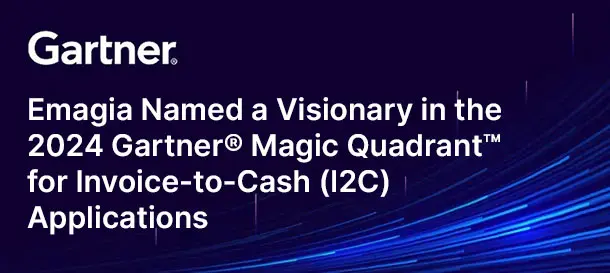The Order to Cash (O2C) workflow is fundamental to all companies involved in selling goods or services. It encompasses all the steps involved in fulfilling customer orders and collecting payments. In the rapidly evolving digital landscape, companies are adopting technology to streamline and automate this vital order to cash process. Enter Order to Cash Automation Software, a solution designed to streamline and optimize the order to cash cycle. In this blog, we will dive deep into what order to cash automation software is, how it works, its benefits, the challenges of implementation, and how companies like Emagia are revolutionizing this space.
Understanding Order to Cash (O2C) Process
Before we dive into the automation software itself, let’s understand the order to cash process flow and its order to cash meaning.
- Definition and Importance: The order to cash definition refers to the series of steps that starts when a customer places an order and ends when the business collects payment for that order. It’s crucial because it affects the business’s cash flow and customer satisfaction.
- Key Stages in the Order to Cash Business Process:
- Order Management: Capturing the customer’s order and ensuring it’s valid.
- Inventory Management: Checking stock levels and ensuring the right product is available.
- Order Fulfillment: This stage involves selecting, packaging, and delivering the product to the customer.
- Invoicing and Billing: Generating the invoice once the order is fulfilled.
- Accounts Receivable: Collecting the payment and ensuring the payment terms are met.
What Is Order to Cash Automation Software?
Order to cash software includes the systems and applications designed to automate different phases of the order-to-cash cycle. This software integrates with your existing systems like ERP and CRM to manage everything from order entry to invoicing and payment collection.
- Definition and Overview: Essentially, order to cash automation software minimizes manual intervention, ensuring faster processing, fewer errors, and improved cash flow.
- Evolution of Order to Cash Software: Initially, businesses relied on paper-based processes, which were time-consuming and error-prone. With advancements in software technology, the best order to cash software solutions have evolved to provide real-time tracking, automated invoicing, and seamless payment integrations.
The Order to Cash Process
While order to cash automation software handles most of the workflow, it’s important to understand the key stages of the process.
1. Order Management
- Order Entry and Validation: When a customer places an order, automation ensures the order details are captured correctly and validated against inventory and customer data.
- Order Processing: The system triggers actions like inventory checks, delivery scheduling, and invoicing.
2. Inventory Management
- Stock Level Monitoring: Automation ensures that stock levels are constantly monitored to avoid stockouts or overstocking.
- Replenishment Strategies: Automated alerts and order generation ensure that inventory is restocked at the right time.
3. Fulfillment and Shipping
- Picking and Packing: Automated systems manage inventory picking and packing efficiently, ensuring order accuracy.
- Logistics and Delivery: Integrated systems allow for real-time tracking of shipments and provide customers with delivery updates.
4. Invoicing and Billing
- Invoice Generation: Once the order is fulfilled, automated systems generate invoices based on pre-set templates and conditions.
- Billing Cycles: Automation manages recurring billing cycles and sends out invoices without manual intervention.
5. Automated Accounts Receivable Payments
- Software-driven systems streamline payment processing, enabling quicker receipt of funds.
- Credit Management: The system tracks customer credit, enabling smarter credit decisions.
6. Reporting and Analytics
- Performance Metrics: Automation helps organizations track key performance metrics like delivery speed, payment collection duration, and client satisfaction levels.
- Financial Reporting: With automated data capture, financial reports are generated in real-time, providing valuable insights into cash flow and revenue.
Benefits of Order to Cash Automation
Automation is a game-changer for businesses. Here are some key benefits:
1. Enhanced Efficiency
By automating repetitive tasks like order entry and invoice generation, businesses can streamline their operations. This leads to faster order fulfillment and less human error.
2. Improved Cash Flow
With automated invoicing and payment collection, businesses can significantly reduce the time it takes to get paid, which ultimately improves cash flow.
3. Better Customer Experience
Automated systems help ensure precise order completion and invoicing, minimizing mistakes and boosting customer experience.
4. Cost Savings
By reducing the need for manual intervention and cutting down on errors, businesses can lower their operational costs and improve profitability.
Key Features of Order to Cash Automation Software
Not all order to cash software vendors offer the same capabilities. Look for the following important features when evaluating solutions.
1. Integration Capabilities
Seamlessly integrates with existing systems like ERP and CRM to provide a unified view of the order to cash process.
2. Data Management
Centralized data management allows businesses to access real-time data on orders, payments, and customer information.
3. Workflow Automation
Automates tasks like invoicing, order processing, and payment reminders, ensuring a smooth flow of operations.
4. Analytics and Reporting
Customizable dashboards and detailed reports provide valuable insights into the performance of the order to cash business process, enabling businesses to make data-driven decisions.
5. Security and Compliance
Order to cash software comes with robust security features to protect sensitive customer and financial data and ensure compliance with regulatory requirements.
Implementing Order to Cash Automation Software
The implementation of order to cash automation software can be a daunting task. Here’s how you can make it successful:
Assessment and Planning
- Identify business needs and define clear objectives.
- Review existing O2C procedures to identify which parts can benefit from automation.
Software Selection
- Evaluate different order to cash software vendors and software solutions.
- Choose a solution that fits your business size, industry, and specific needs.
Integration Process
Ensure compatibility with existing systems and manage data migration effectively.
Training and Support
Provide comprehensive training for employees and ensure ongoing technical support.
Monitoring and Optimization
Continuously monitor the software’s performance and make adjustments to improve efficiency.
Challenges in O2C Automation
While order to cash automation software offers numerous benefits, there are some challenges to be aware of:
1. Change Management
Adapting to new technology can be difficult for employees accustomed to manual processes.
2. Data Quality
Poor data quality can lead to errors in automated processes, so maintaining accurate data is critical.
3. Integration Complexities
Integrating automation software with legacy systems can be complex and costly.
4. Cost of Implementation
Upfront costs for software, integration, and training can be significant.
Emagia: A Leader in Order to Cash Automation Software
Emagia offers a cutting-edge order to cash automation software platform that transforms traditional order to cash cycle management into a highly efficient, automated process.
- AI-Powered Automation: Emagia leverages artificial intelligence to automate complex tasks like credit risk assessment and dispute management.
- Seamless Integration: Easily integrates with popular ERPs and CRMs to provide end-to-end automation.
- Real-Time Analytics: Offers advanced analytics to provide actionable insights and help optimize cash flow.
- Customer-Centric Approach: Improves customer satisfaction by ensuring faster order processing and payment resolution.
Conclusion
In summary, order to cash automation software is revolutionizing the way businesses manage their order to cash business process. By automating key steps in the order to cash cycle, companies can improve efficiency, reduce errors, enhance customer satisfaction, and boost cash flow. While implementation requires planning and commitment, the benefits far outweigh the challenges. Platforms like Emagia are at the forefront, offering innovative solutions that empower businesses to optimize their entire order to cash process flow.



